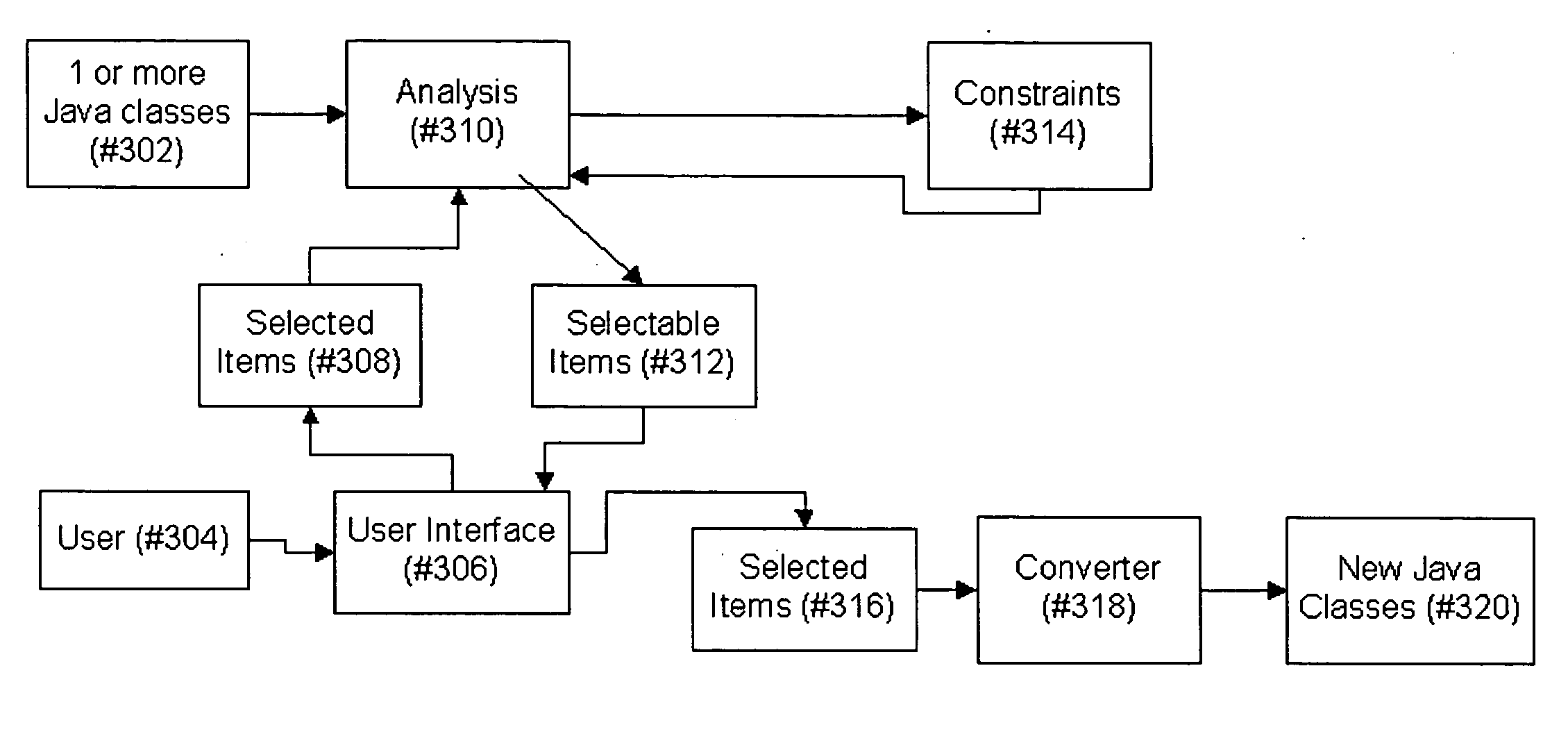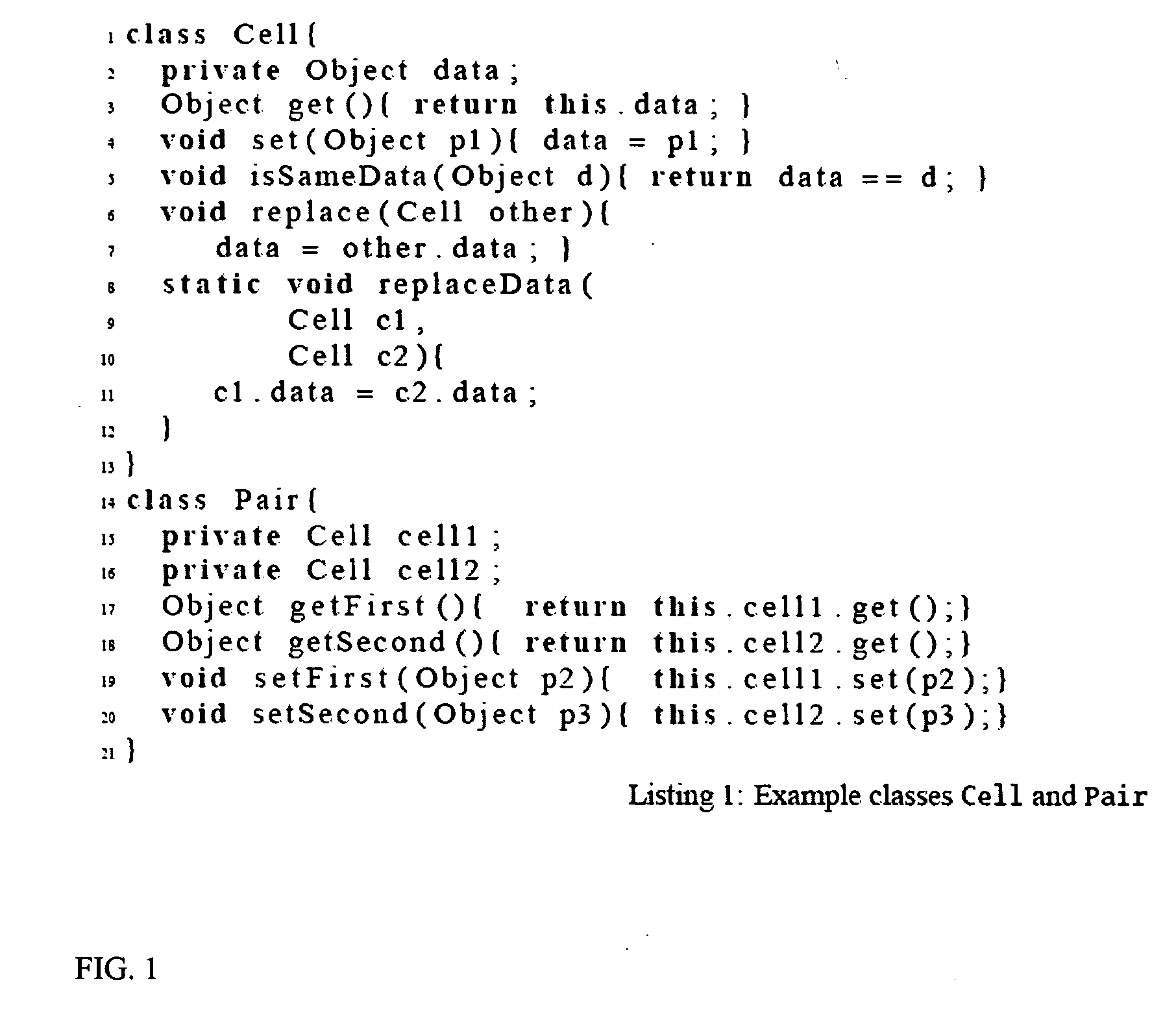Parameterization of programming structures
a programming structure and parameterization technology, applied in the field of computer programming, can solve the problems of unnecessarily restrictive, clear undesirable, and tend to increase the complexity of the usage a bi
- Summary
- Abstract
- Description
- Claims
- Application Information
AI Technical Summary
Benefits of technology
Problems solved by technology
Method used
Image
Examples
Embodiment Construction
[0042]FIG. 1 shows an example class Cell, which is a container that can store a single value, and class Pair, which can store two values (of possibly different types). Class Pair is implemented in terms of Cell. The Cell class provides standard accessor methods, get and set. The aforementioned example will be used to illustrate the many degrees of freedom that are available when parameterizing classes. In general, the software engineering trade-offs are complex, so that there is no unique “best” solution. A partial list of the available degrees of freedom includes: 1) the type references that should (for reusability, modifiability, etc.) become references to type parameters (which subsumes the decision as to which classes to parameterize), 2) for a given type reference to be transformed to a reference to a type parameter, whether to “reuse” an existing type parameter or to create a new one, 3) whether to leave references raw or parameterize the references using type bounds, if any, ...
PUM
 Login to View More
Login to View More Abstract
Description
Claims
Application Information
 Login to View More
Login to View More - R&D
- Intellectual Property
- Life Sciences
- Materials
- Tech Scout
- Unparalleled Data Quality
- Higher Quality Content
- 60% Fewer Hallucinations
Browse by: Latest US Patents, China's latest patents, Technical Efficacy Thesaurus, Application Domain, Technology Topic, Popular Technical Reports.
© 2025 PatSnap. All rights reserved.Legal|Privacy policy|Modern Slavery Act Transparency Statement|Sitemap|About US| Contact US: help@patsnap.com



